Honda D16 Engine – Everything You Need To Know
After reviewing several of Honda’s highest-regarded engines, it’s the D-Series’ turn to shine! Here, we’re covering everything you could ever need to know about Honda’s D16 engine.
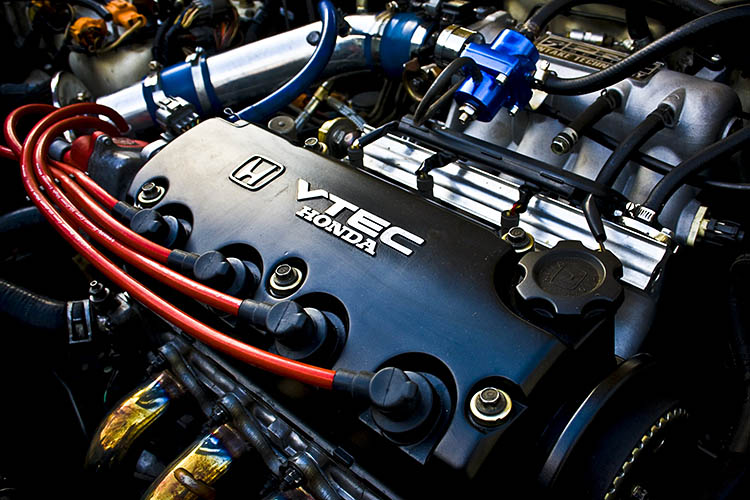
- Introduction
- Honda D16 Generations & Specs
- Honda D16 Tuning & Upgrades
- Honda D16 Common Issues & Maintenance
- Conclusion
Introduction
Although you may be surprised to see a Honda engine guide here at Drifted, we’re well aware that many drifting fans begin their path into the tuning world with the likes of Civic’s, and given the D16’s popularity, it’s an engine that we just had to explore.
We’ve already looked at some of Honda’s most legendary powerplants, such as the B16, K20, and the K24.
So, if you’re a Honda fan, we highly recommend checking these out after you’ve finished this guide, especially if you’re not sure which engine best suits your needs.
Production began for the Honda D engine series all the way back in 1984, with the 1.5-liter D15-series engine initially found in the Honda CRX throughout the US and Europe.
The inline-four D-series would later feature in some of the most common Hondas on the market alongside the CRX, such as the Civic, Stream, Logo, and of course, the Integra.
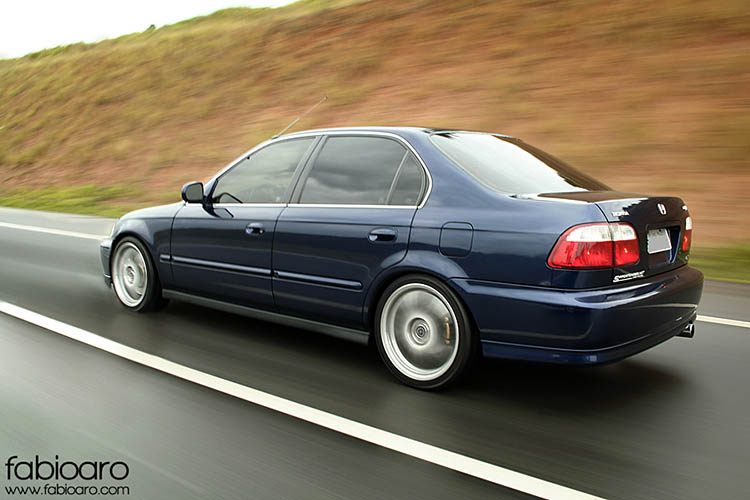
Just two years after production began for the D-series engine lineup, Honda opted to produce an engine with an increased displacement, which is when the 1.6-liter D16 was born.
Based upon the 1.5-liter aluminium block of the D15 engine, Honda increased the deck height for the D16 to 212 mm (an increase of 4.5 mm), with a 90 mm stroke crankshaft, 137 mm connecting rods, and 75 mm pistons.
Although they share the same cylinder bore, the piston stroke’s increase enabled Honda to achieve the desired displacement of 1.6-liters.
Given the D-series’ high availability, particularly with the D16, it’s fast becoming an increasingly popular choice for both tuners and those seeking an immensely reliable powerplant over the years.
Thanks to the mass-production scale, used Honda D16’s are prevalent in North America and conveniently sourced for incredibly low prices, making them the perfect candidate for upgrading.
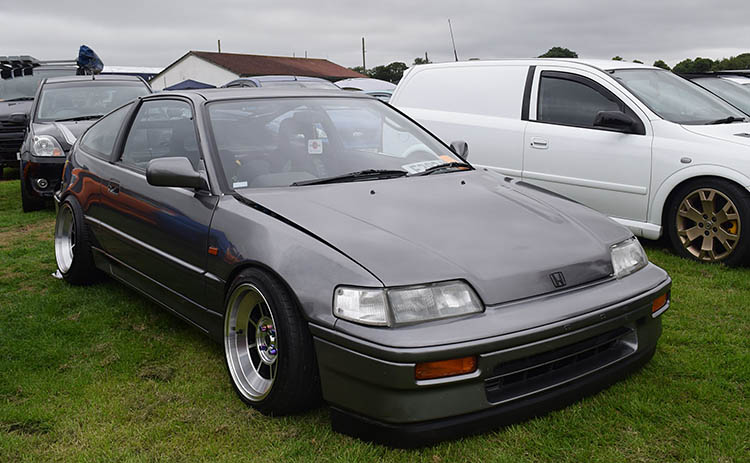
Not only are they cheap and highly available, but they’re also extremely lightweight, and many of the D16 engines feature Honda’s legendary VTEC technology, which makes them highly desirable. I mean, who doesn’t love it when the “VTEC kicks in, yo!”
Combine these positives with a respectable amount of off-the-shelf aftermarket support, and there’s no wonder that so many Honda enthusiasts are opting for Honda’s D16 engine with their tuning builds.
There has been an immense number of minor variations throughout the D16’s incredibly long lifespan, which lasted over twenty years, from 1986 to 2007, and although they all have 16-valves, some feature SOHC, while others have DOHC.
On top of that, there are also VTEC and non-VTEC variations to consider, so it’s important to know that you’re getting the best bang for your buck before you purchase.
In this guide, we’ll be explaining the differences between the many D16 engine variations before explaining how to unleash the true power potential with aftermarket support and any common issues that you may need to consider before doing so.
Honda D16 Engine Generations & Specs
The D16 engine had an incredible amount of revisions for the various models worldwide during its twenty-year history, and we’ll take a look into each specific model in this section.
Although the D16 is extremely popular among tuning enthusiasts, the earlier versions were far less desirable, with two of the more popular performance-based offerings – the SOHC VTEC-based D16Y8 and D16Z6, not reaching the market until the nineties.
Many Honda fanboys will argue that the D16 never matched the legacy of the B16. Honda initially had economic benefits as the main priority when they created the D16, whereas the B16 was more performance-oriented from the start.
Throughout its twenty-year history, the compression ratio varied between 9.1:1 and 12.5:1 with a displacement of 1,590 cc.
The cylinder block and cylinder head on the D16 is cast aluminium, with an inline-four configuration and SOHC, DOHC, VTEC, and non-VTEC variations.
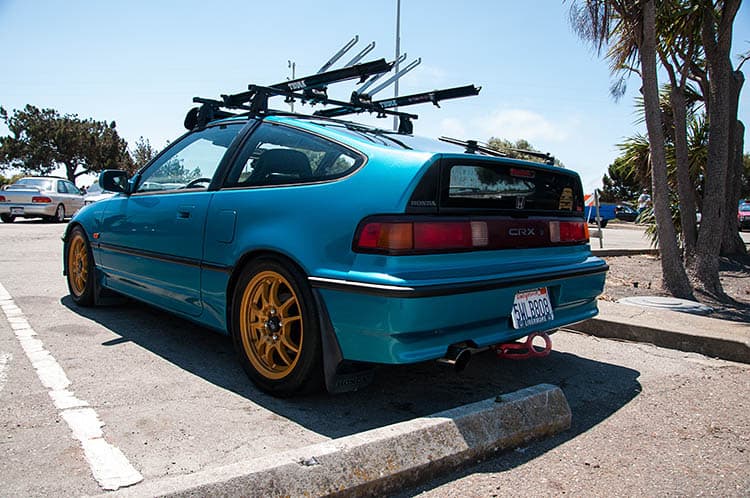
Although it was only capable of 103 hp initially, Honda later revised the engine to reach its maximum power in its stock form of 130 hp, with torque output ranging between 99 lb ft through to 116 lb ft.
Honda has utilized a deck height of 212mm, alongside a 90mm stroke crankshaft, 137mm connecting rods, and 75mm pistons.
Let’s take a look at the rather insane number of revisions that Honda carried out to the D16 engines over its extensive history.
D16A1
- 1986-1989 – Acura Integra (US)
The A1 was the first entry to the D16 engine line-up in 1986, before production came to a halt in 1989.
It featured a DOHC head and initially pushed out 113 hp at 6,250 rpm and 99 lb/ft torque at 5,500 rpm with an initial compression ratio of 9.3:1.
It would later receive a revised piston upgrade in 1988, which increased the compression ratio to 9.5:1 and a slight power increase, providing its maximum 118 hp output at 6,500 rpm and 103 lb/ft torque at 5,500 rpm.
D16A3
- 1986-1989 – Honda Integra (Australia)
The DOHC D16A3 was the same as the later-revised D16A1, explicitly built for the Australian market for use in the Acura Integra.
D16A6 (D16Z2)
- 1988-1991 – Honda Civic Si, CRX Si
- 1990-1991 – Honda Civic EX (4dr), Civic Wagon RT4WD (US)
- 1988-1995 – Honda Civic Shuttle RT4WD (UK/Europe/Asia/AU/NZ)
- 1989-1996 – Rover 216/416 GSi/Tourer (UK/Europe)
Produced between 1988 to 1996 and featured in numerous vehicles, the A6 featured a 9.1:1 compression ratio and SOHC.
The 1988 version had 105 hp, where the later versions had 108 hp alongside 100 lb/ft torque. The D16A6 redlined at 6500 rpm.
D16A7
- 1988-1991 – Honda Civic GTi (New Zealand)
- 1988-1989 – Honda Civic ED4, ED7 (Europe)
- 1995 – Honda Civic EG4 (New Zealand)
- 1988-1995 Honda Models (South Africa)
- 1994 – Honda Civic GTi (New Zealand)
- Ballade – SH4 & SR4 (EE4)
The D16A7 is near-identical to the D16A6, besides the fact that it no longer features a catalytic converter.
With 117 hp at 5,900 rpm and 101 lb/ft torque at 4,800 rpm, it features a compression ratio of 9.6:1 and is SOHC.
D16A8
- 1988-1995 – Honda Civic/CRX/Concerto (UK/Europe/Australia)
- 1992-1995 – Rover 216/416 GTi (UK/Europe)
- 1993-1997 – Rover 216 Sport Coupé (Europe)
With a compression ratio of 9.5:1, this DOHC engine was capable of 120 hp at 6,800 rpm, and 108 lb/ft torque at 5,900 rpm.
D16A9
- 1988-1991 – Honda Concerto (UK/Europe)
- 1988-1991 – Honda CRX 1.6i-16 (UK/Europe/South Africa)
- 1990-1992 – Honda Ballade 160i-DOHC (South Africa)
- 1988-1991 – Honda Civic 1.6i-16 (UK/Europe)
- 1992-1993 – Honda Civic GTi (New Zealand)
- 1989-1992 – Rover 216/416 GTi (UK/Europe)
- 1992-1995 – Honda Civic Si (Japan, Europe, and Peru)
The DOHC D16A9 is identical in design to the D16A8, with the most outstanding difference being the lack of a catalytic converter.
Its power output varied slightly between 125-129 hp at 6,800 rpm, and 105 lb/ft torque at 5,700 rpm. Here, the rev counter hit the redline at 7200 rpm, a respectable figure for an economy-focused powerplant.
D16B2
- 1998-2001 – Honda Civic Aerodeck MC1 LS/ES/SR
- 1997-2000 – Rover 416 Si Automatic
The D16B2 returned to the SOHC valvetrain, with 116 hp and 105 lb/ft torque.
D16B5
- 1998-2000 – Honda Civic GX
This engine uses the SOHC VTEC-E system with a 12.5:1 compression ratio, achieving just 106 hp. It was similarly designed to the D16Y5, although the head gasket, intake manifold, pistons, rods, and camshaft were different.
D16B6
- 1999 – Honda Accord – CG7/CH5 (Europe)
The B6 provides 114 hp at 6,400 rpm and 103 lb/ft of torque at 5100 rpm with its SOHC valvetrain.
D16V1
- 1999-2005 – Honda Civic EM/EP2/EU8/ES7 (Europe)
Designed for the European market, the D16V1 used a SOHC head with VTEC alongside a 10.4:1 compression ratio, which provided 109 hp at 5,600 rpm and 112 lb/ft torque.
D16W1
- 1999-2006 – Honda HRV
The non-VTEC SOHC D16 W1 provides 103 hp at 6,200 rpm and 100 lb/ft torque at 3,400 rpm with a 9.6:1 compression ratio.
D16W3
- 1998-2001 – Honda Civic Aerodeck MC1 LS/SR
The W3 was another non-VTEC SOHC engine, this time with a 10.4:1 compression ratio and a power output of 116 hp.
D16W4
- 1999-2000 – Honda Civic MB4 VTEC/ES
- 1998-2001 – Honda Civic Aerodeck MC1 VTEC/ES
VTEC returned to help push out 126 hp at 6,600 rpm from this SOHC engine, which achieved 106 lb/ft torque at 5,500 rpm with a compression ratio of 9.6:1.
D16W5
- 2000-2006 – Honda HRV
This engine was the same as the D16W4 but utilized the VTEC-E system, which provided 122 hp with its SOHC design.
D16W7
- 2005-2007 – Honda Civic Vti-L/ Vti (Asia)
- 2001-2005 – Honda Civic ES (Europe, Turkey, Singapore)
The SOHC VTEC-E W7 featured 115 hp at 5,600 rpm and 112 lb/ft torque at 4,300 rpm in the Asian model, and 110 hp and 112 lb/ft torque for the European, Turkish, and Singaporean models, with a 10.9:1 compression ratio.
D16W9
- 2001-2005 – Honda Civic VTi (Philippines, Pakistan)
With a power output of 130 hp at 6,600 rpm, and torque of 111 lb/ft at 5,500 rpm, the W9 featured the 3-stage VTEC, VTEC3, with the first VTEC switchover at 2,500 rpm, and the second at 5,500 rpm.
D16Y1
- 1992-1995 – Honda Civic VTi (Australia)
The SOHC Y1 was built for the Australian market and featured a compression ratio of 9.3:1 with 129 hp at 6,600 rpm, and 107 lb/ft torque at 5,200 rpm. VTEC switchover took place at 5,000rpm.
D16Y2
- 1995-1997 – Honda Civic MB1 SR
The SOHC VTEC Y2 engine had a compression ratio of 9.5:1, which provided 126 hp at 6,500 rpm, and 106 lb/ft torque at 5,200 rpm. VTEC switchover takes place at 5,500 rpm.
D16Y3
- 1995-1997 – Honda Civic MB1 LS (UK/Europe)
- 1996-1997 – Rover 416 SLI Auto (UK/Europe)
The SOHC Y3 has 111 hp at 5,600 rpm, 103 lb/ft at 5,100 rpm, and a compression ratio of 9.4:1.
D16Y4
- 1998-2000 – Honda Civic iES (Turkey)
- 1996-2000 – Honda Civic CXi, GL, GLi (New Zealand, Australia)
With a power output of 118 hp at 6,400 rpm at 106 lb/ft at 5,000 rpm, the Y4 also has a compression ratio of 9.4:1.
D16Y5
- 1996-2000 – Honda Civic HX
- 1996 – Honda Civic EX Sedan (Peru)
- 1996-2000 – Honda Civic VTI Sedan (Australia)
While the HX and EX models were given 115 hp at 5,600 rpm and 104 lb/ft torque at 4,500 rpm, the Australian VTI model has 118 hp and 107 lb/ft torque. Both versions have SOHC VTEC-E and a compression ratio of 9.4:1.
D16Y7
- 1996-2000 – Honda Civic DX/VP/LX/CX
- 1998-2000 – Honda Civic Special Edition – SE/EX (Canada)
- 1996-1997 – Honda Del Sol S
- 1996-1997 – Honda Civic Coupé LSI
The popular SOHC Y7 has a compression ratio of 9.4:1, which provides 106 hp at 6,200 rpm and 103 lb/ft torque at 4,600 rpm.
D16Y8
- 1996-1997 – Honda Del Sol Si (US)
- 1996-2000 – Honda Civic EX (US, UK)
- 1996-1998 – Honda Civic Coupe (UK)
- 1996-2000 – Honda Civic Si (Canada)
- 1997-2000 – Acura 1.6 EL (Canada)
The D16Y8 is also known in New Zealand as the D16Y6 and is one of the most desirable D16 engines.
With SOHC VTEC and a compression ratio of 9.6:1, it’s capable of pushing out 127 hp at 6,600 rpm with 107 lb/ft torque at 5,500 rpm with the VTEC switchover kicking in at 5,600 rpm.
D16Y9
- 1996-2000 – Honda Ballade/Civic (South Africa & Venezuela)
The Y9 is the same as the non-VTEC D16Y4, with the addition of a new camshaft.
This model’s power figures reportedly vary between 106-119 hp and 108lb/ft torque, with the South African model reportedly receiving the higher horsepower figures.
D16Z5
- 1989-1992 – Honda CRX (Europe)
The Z5 is essentially the same as the A9, but with an added catalytic converter and lambda sensor.
This DOHC engine produces 122 hp at 6,800 rpm with 103 lb/ft torque and a compression ratio of 9.5:1.
D16Z6
- 1992-1995 – Honda Civic Si
- 1992-1995 – Honda Civic EX, EX-V
- 1992-1995 – Honda Civic ESi (Europe)
- 1993-1995 – Honda Del Sol Si (US)
- 1993-1996 – Honda Del Sol ESi (Europe)
The Z6 is another desirable model, which has SOHC VTEC and a compression ratio of 9.2:1, achieving 125 hp at 6,600 rpm and 106 lb/ft torque at 5,200 rpm with the VTEC switchover taking place at 4,800 rpm.
D16Z7
- 1996-2000 Honda Civic EX Coupé
Another desirable VTEC engine, achieving a more respectable 127 hp at 6,600 rpm, with 107 lb/ft torque at 5,500 rpm and a compression ratio of 9.6:1.
D16Z9
- 1994-1995 – Honda Civic Coupé (EJ1) ESi (Europe)
- 1994-1995 – Honda Civic Sedan (EH5) EX (US)
Another respectable power offering was the SOHC Z9, which pushed out 130 hp at 6,600 rpm and 106 lb/ft torque at 5,200 rpm, with VTEC switchover taking place at 4,800 rpm and a compression ratio of 9.3:1.
Honda D16 Tuning & Upgrades
Although the D16 can often get overlooked by enthusiasts for some of the more popular tuning engines, such as the B16, it certainly packs some potential if you are willing to explore its tuning capabilities.
The main criticisms of the D16 are the low displacement and low factory output, which are both valid points. But as always, there are ways to unlock insane power figures if you’re willing to put in the work (and funds).
We’ve witnessed several D16 builds around the 500 hp mark, with some even reaching up to 700 hp.
Eager to see the potential that a SOHC D16 has to offer? Turn up your speakers and enjoy this 9-second quarter-mile at the strip.
Or, how about this D16-equipped Civic running on 45 PSI of boost?
As always, when it comes to modifications, the more cold airflow into your engine, the better.
Although turbocharging is the obvious method with the D16, we understand that it isn’t for everyone, so we’ll first explore some alternative options.
One of the popular upgrades, especially for the Y7 engines, is to install a Y8 manifold, which provides a small, but reasonably-priced power increase, also allowing increased airflow.
Most will also opt for an aftermarket exhaust, and although it’s not likely to provide much in the way of power gains on a low-horsepower engine, it can certainly improve the looks and sounds.
On a naturally aspirated D16, we’d typically opt for a 1.5-2.5” inner diameter for the best results.
However, if you’re considering going with forced induction further down the line, then make sure you opt for a larger diameter exhaust to save swapping out twice.
Although this may hinder the initial gains, you’ll thank us later.
Alongside the exhaust is a cold air intake or a panel air filter, which will again improve the sound and responsiveness, even if the actual gains are small.
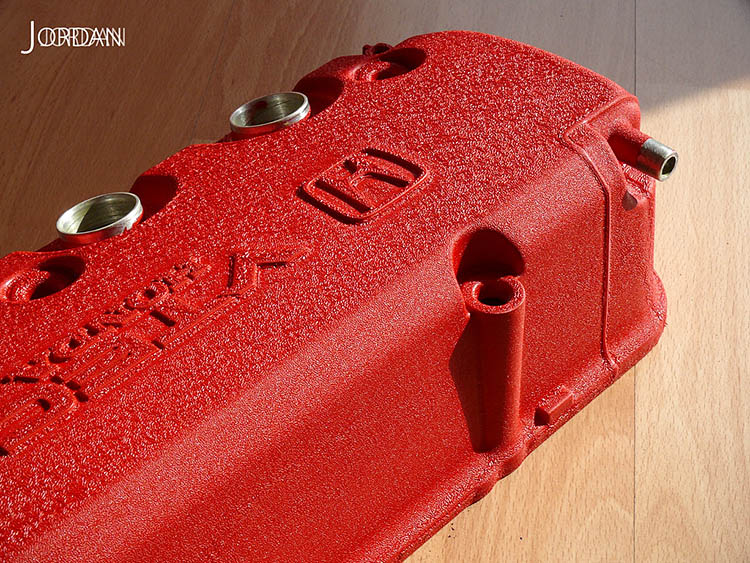
After that, you can consider upgrading the camshaft and headers and considering installing a piggyback ECU.
Fuel pump upgrades, a ported and polished head, high-flow injectors, and full exhaust systems can also become a consideration further down the line, and these should get the engine flowing optimally, which has a positive impact on performance.
If you’re open to spending big bucks, alongside turbocharging, there are various stages of cams, piston upgrades, and other extras such as bigger valves and titanium retainers you can get.
Suppose you do happen to reach this point. In that case, you’ll also need to consider engine management, which is where systems like Hondata will prove valuable, or you could opt for standalone management for the ultimate setup.
Be aware that the more aggressive you end up going with tuning, and cams in particular, the harsher the car will be for daily use, which could end up turning your daily driver into a nightmare in traffic.
Turbocharging & Supercharging
The D16 is a great candidate for forced induction due to its price and availability if things happen to go a little unplanned!
As always, with a forced induction build, we highly recommend that you ensure you’re starting with a good quality block by checking for any apparent issues and also carrying out a compression test. Otherwise, your engine might go kaboom! once the turbos spool up.
There are some extremely reasonable-priced offerings out there if you’re interested in turbocharging, and CXRacing offers a 300-350 hp-setup, as well as a high-powered 400-500 hp alternative.
Although you can’t expect to strap a turbo onto your stock D16 and expect to impress at the drag strip, the CXRacing equipment provides excellent value for money alongside the correct supporting mods and management.
On the other hand, if you’re considering going down the supercharger route, the Kraftwerks and Jackson Racing options are typically the most popular choices.
We highly recommend doing your research if forced induction is an avenue you’d like to explore, and we can certainly understand why it can be a temptation with the D16!
However, if you take shortcuts and attempt to get the job done as cheaply as possible, you’ll likely need to be prepared to get block-shopping far sooner than you’d like. And, who wants to do that?
Honda D16 Engine Common Issues & Maintenance
We’re sure you’re already aware, but Honda engines are notoriously reliable, and the D16 is certainly no exception.
As always, regular servicing and maintenance are vital, particularly when it comes to frequent oil changes, but we’ve frequently seen these top over 180,000-200,000 miles and still going.
Of course, if you start strapping turbo kits and carrying out significant tuning upgrades, you’re likely to limit the life a little, but assuming you use reputable shops/tuners, we’d still expect to see impressive reliability. It’s a Honda after all!
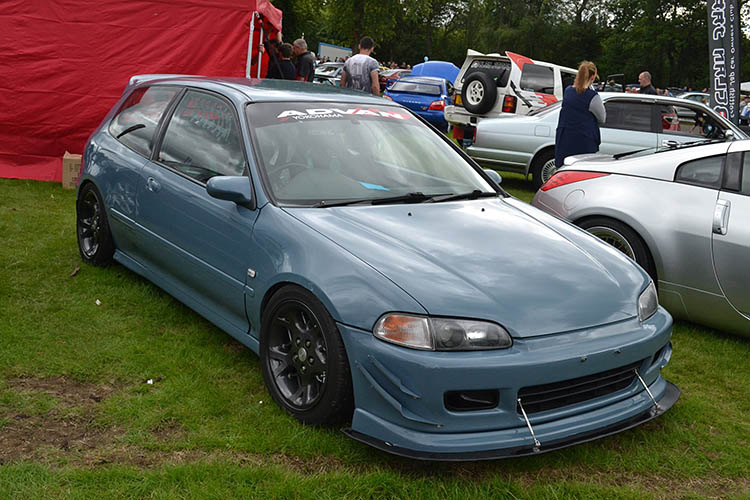
Some things to look out for when looking at a D16 are that they can sometimes suffer from oil leaks, which should be relatively easy to spot, as well as misfiring.
Should you hear a rough idle, it’s likely to be something as simple, which is usually the throttle body or idle control valve requiring a clean. If that doesn’t solve it, it’s likely to fall to the O2 sensor.
If the engine sounds continuously rough and almost diesel-like, it’s likely to be an issue with the exhaust manifold, so it’s worth taking it off and seeing if there are any cracks.
Since they’re so cheap to source, we’d recommend replacing or upgrading, rather than repairing.
If you’re looking at a higher-mileage D16, don’t be put off, but we do recommend ensuring that it has a service history that shows frequent oil changes and the usual maintenance that Honda recommends, alongside checking for the minor issues above.
Conclusion
The D16 often sits in the shadows of its Honda siblings, but some of the better variations, such as the D16Y8, can also make for great potential engine swaps, especially if you’re planning a turbocharged setup.
Given their impressive availability and price, it offers a great platform to take the first steps into engine tuning without breaking the bank if things don’t go quite to plan.
Sure, it’s going to be an inconvenience, but we’d prefer to learn the hard way now, rather than when you’re looking at the likes of the far less-reasonable 2JZ or SR20 eventually.
Given its low compression, the D16 takes well to turbocharging.
However, it can be a little disappointing if you’re planning to try and extract some decent power figures from the D16 with simple bolt-on mods, as the output isn’t there.
There are several potential routes to explore on your Honda D16 tuning journey, though, and we wish you all the luck with reaching your goals!
So, there we have it! We hope that we’ve covered everything you could want to know about the Honda D16 in this guide.
If you’re also interested in the other engines that Honda has to offer, make sure you check out our comprehensive Honda B-Series guide.
Want to learn more about some other legendary Japanese engines from the modern era? Then, check out our 1JZ-GTE and 4G63T engine guides.
And if you’re planning to step into the world of drifting, we recommend checking out the best drift cars for beginners guide as the first step.
Thank you for reading our Honda D16 engine guide.
If you enjoyed this article, then please share it with the buttons at the side and bottom of your screen. If you’ve found this information useful, then please take a moment to share it with other Honda enthusiasts. We appreciate your support.
Photography credits
We thank the following entities for the use of their photography in this article:
- Felippe Seifert on Flickr
- Jordan LAB on Flickr
- Fabio Aro on Flickr
- hushypushy on Flickr
- Jaimie Wilson on Flickr
- Jonathan Rados on Unsplash


 (7 votes, average: 4.29 out of 5)
(7 votes, average: 4.29 out of 5)




















